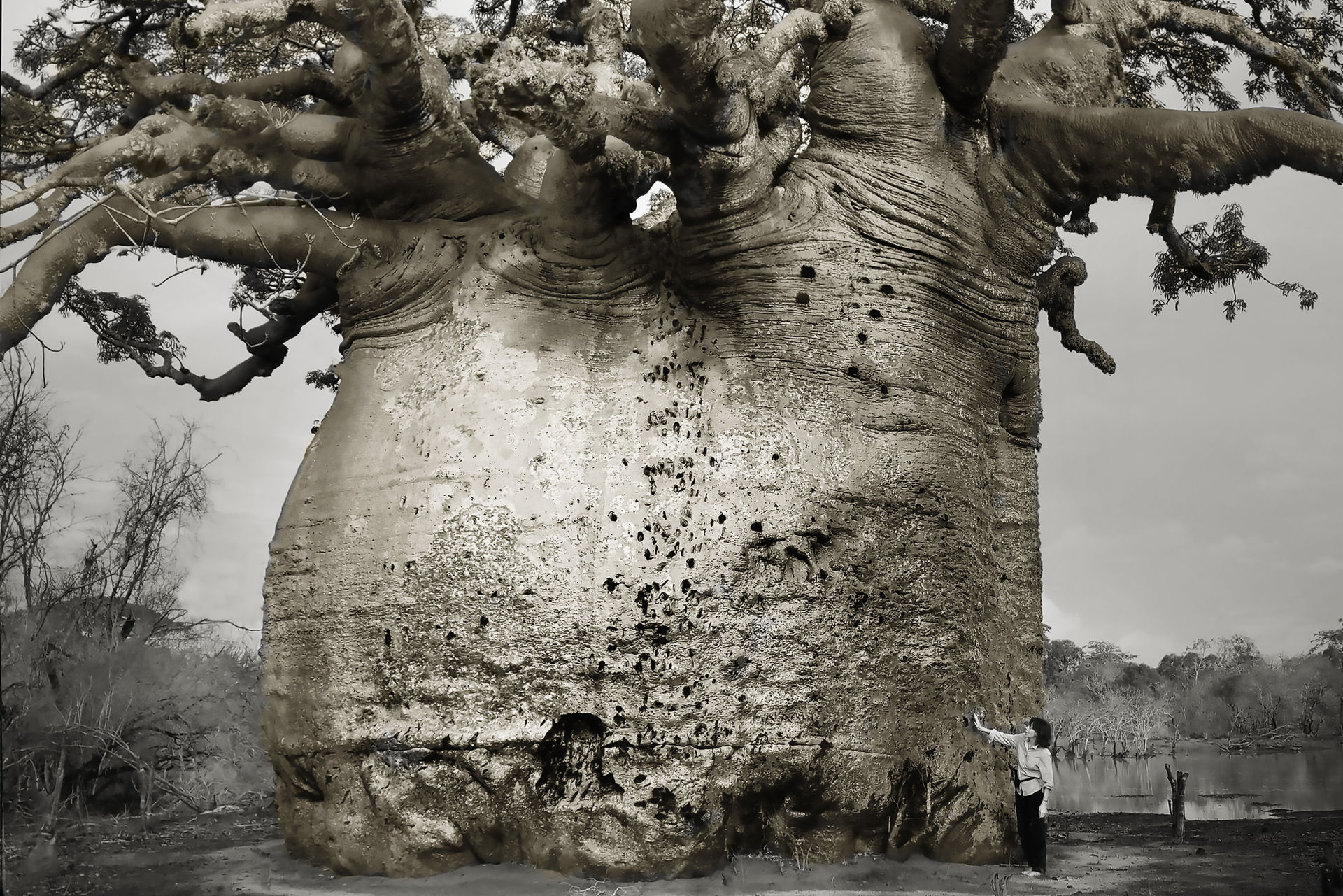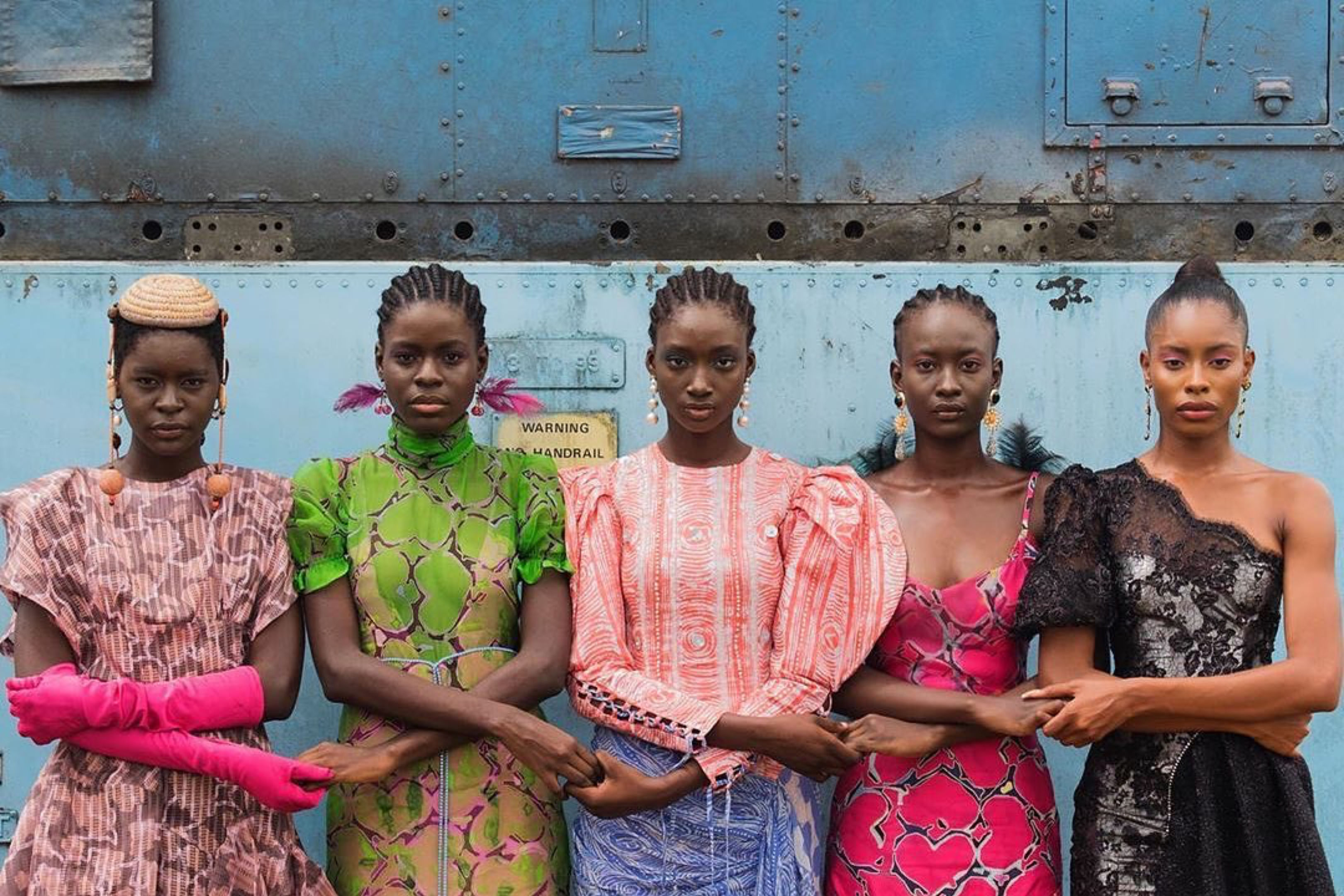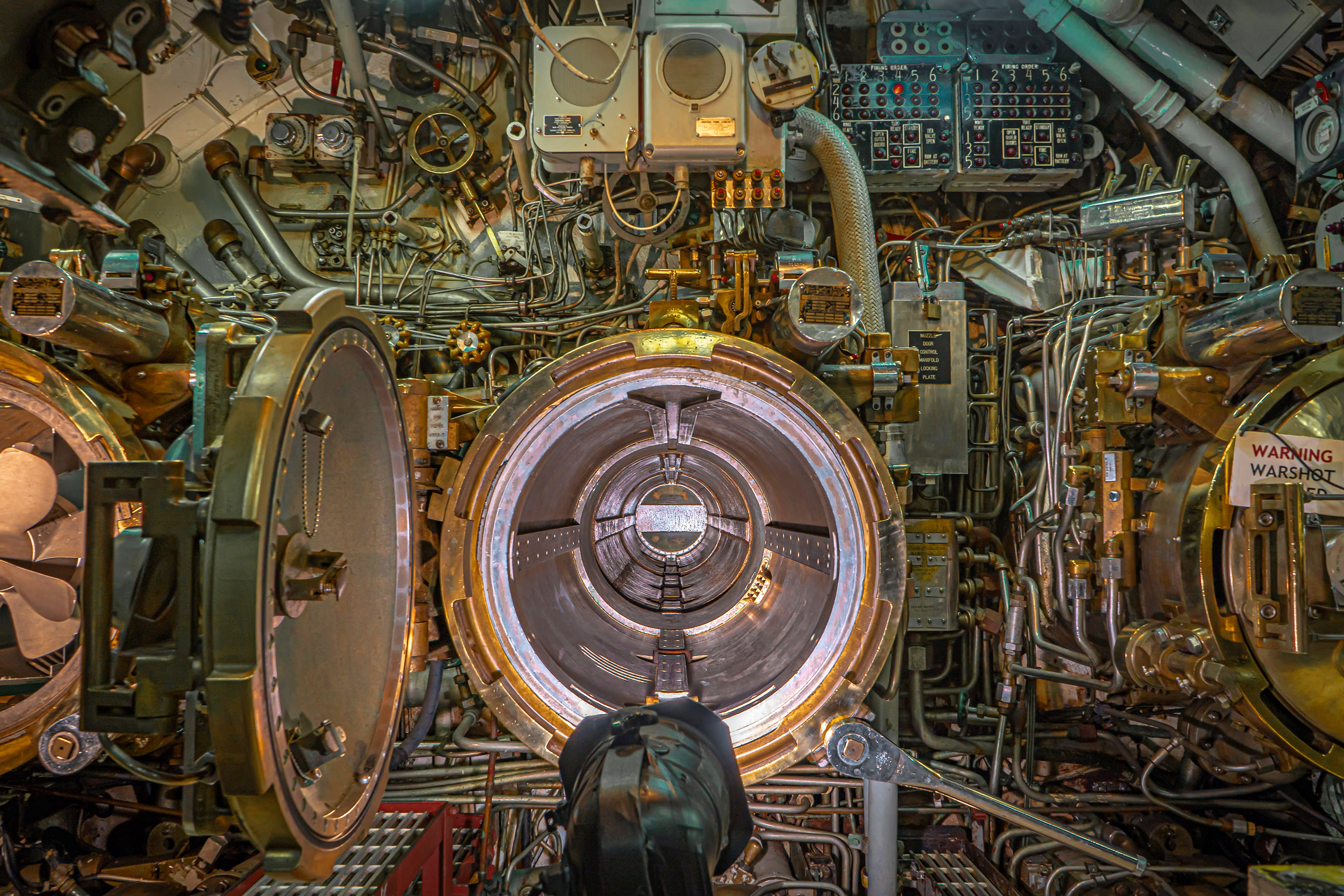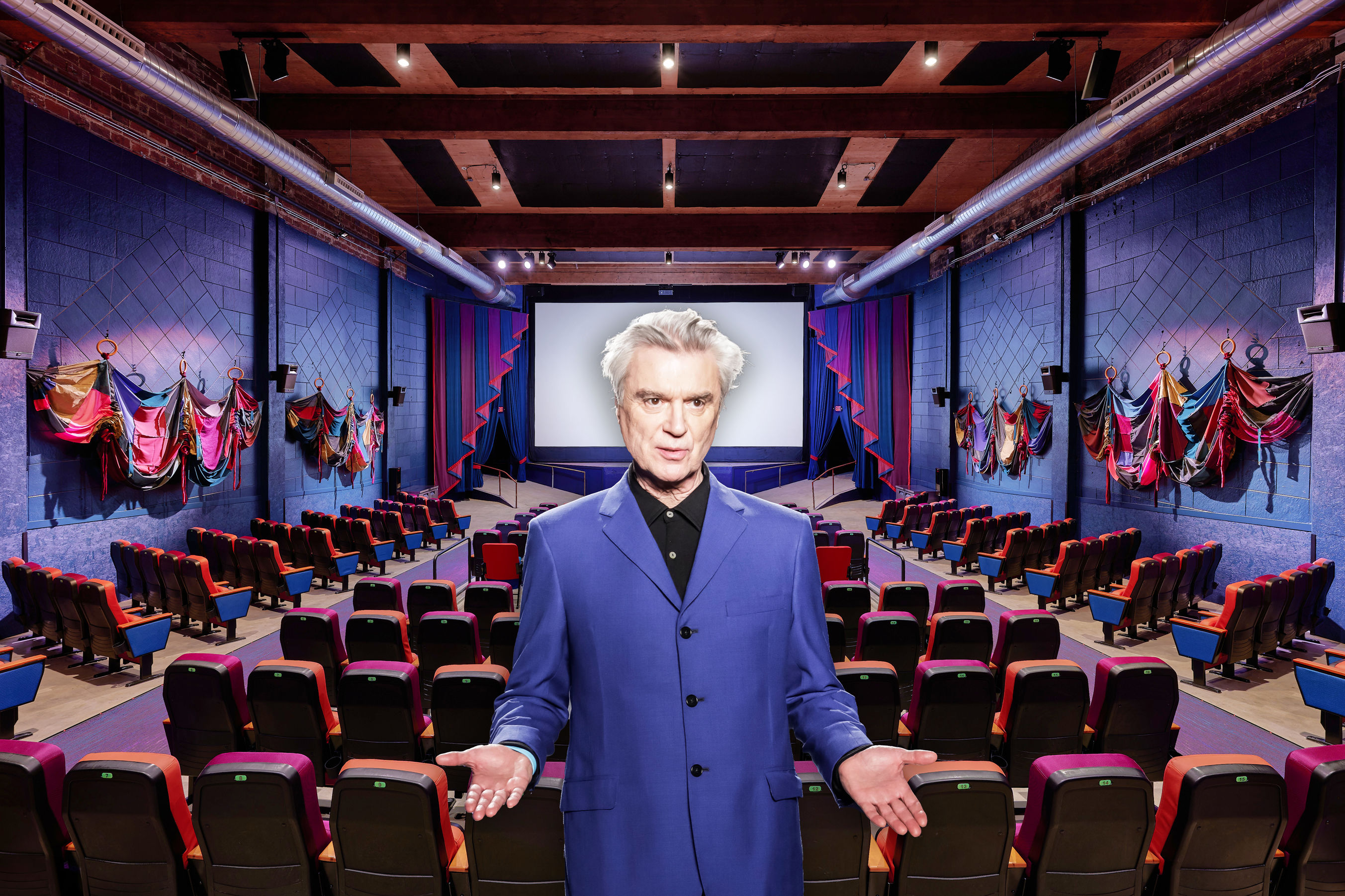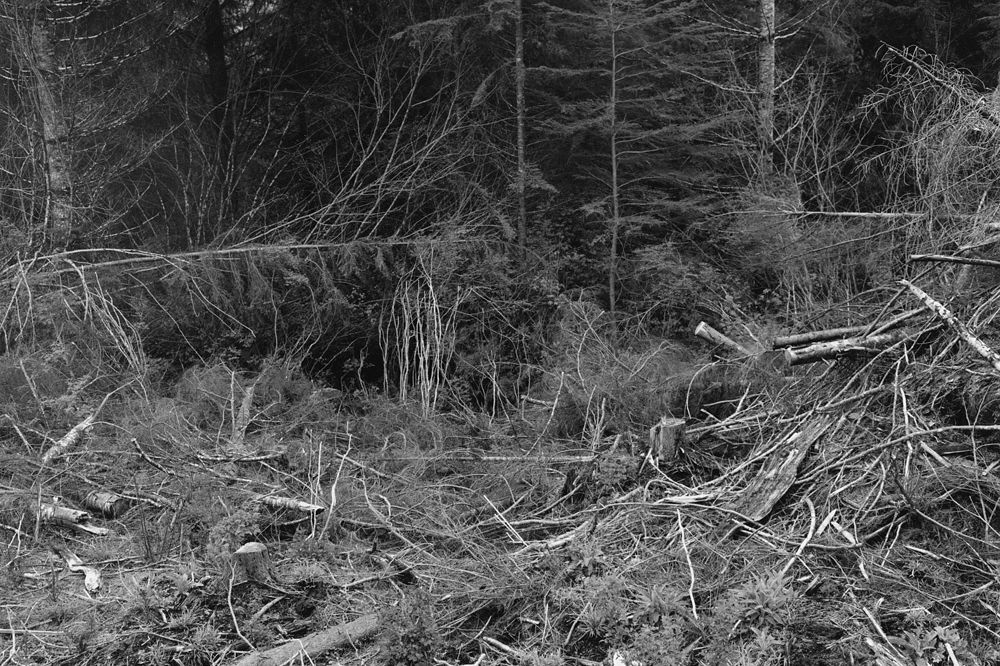
Visionary Photographer Robert Adams Turns His Lens on Oregon
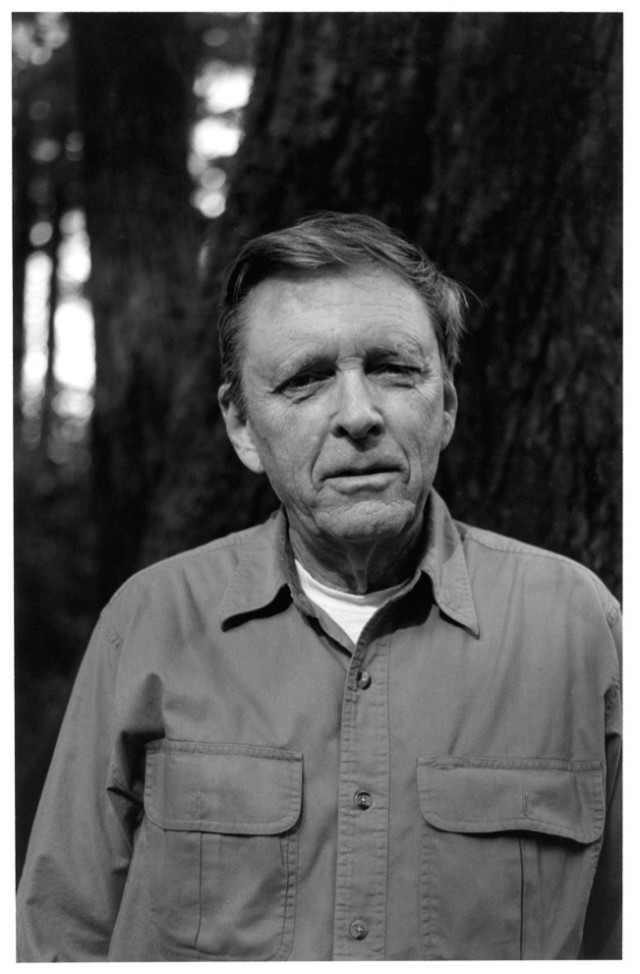
Portrait of Robert Adams by Kerstin Adams, 2004
On September 7, the Portland Art Museum opens an exhibition of 70 prints by Robert Adams, a 76-year-old artist and Astoria resident widely regarded as the most influential landscape photographer of his generation. Throughout his career, Adams has crafted his work as an invitation to ponder the future of the western landscape by examining what we’ve done to it so far. This exhibit, The Question of Hope, marks the first time Adams has directed that call to his fellow Oregonians.
Half of the exhibition’s pictures depict the tree stumps and carcasses shorn on the hillsides of the Coast Range by the logging industry’s giant mechanical snippers and bulldozers. Rendered in grimly exacting grays, the images quite knowingly recall the human carnage documented by battlefield photographers such as Timothy O’Sullivan (the Civil War) and W. Eugene Smith (World War II). To describe the challenge of photographing a clearcut, in fact, Adams invokes a pledge he once heard from Smith, regarding images of the corpse-strewn beaches of the Pacific theater: “I vowed I would not make patterns.” Adams’s photographs project a similar gravity of despair and purpose.
“If you’ve ever walked in these places,” Adams says, “you see how few birds there are. You can smell the herbicide. The devastation—the indiscriminate devastation—is beyond words.”

Clearcut, Clatsop County, Oregon, 1999-2002
The exhibition’s other half portrays the Pacific Ocean, mostly waves and beaches rendered in the same high-key grays, shot from vantage points that make them feel like the Great Plains rolling outward from the foothills of the Rockies. These photographs, in sharp contrast to the bleak clearcut images and their implicit political commentary, are quite simply about beauty. The ocean, Adams writes in an introduction to the exhibit, “seems to me to carry a promise ... no matter how enigmatic its terms are.”
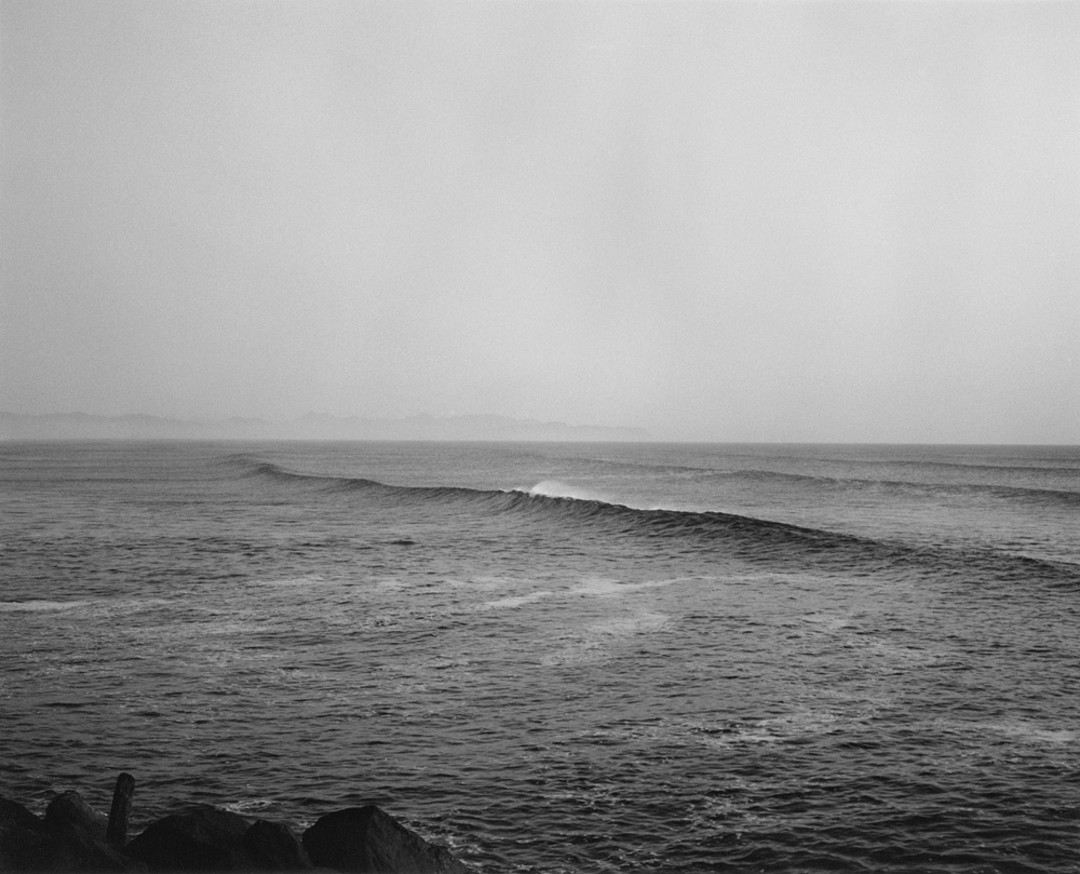
South from the South Jetty, 1992
Destruction and promise: Adams has juxtaposed the two for more than 40 years. He has published more than 30 books of his work and been the subject of exhibits worldwide, most recently a 300-print retrospective organized by Yale Art Gallery now touring major museums in Denver, Los Angeles, Canada, Spain, France, Germany, and Switzerland through summer 2014. That epic show charts a career that broke away from the century-long tradition of photographing the West—the serene, people-free, often abstract views from the likes of Ansel Adams and Edward Weston—to take a hard look at the facts unfolding on the ground: the sprawling complex of freeways, suburban tracts, and signs, so many signs. In Adams’s photographs, the landscape became a kind of storm weathered by its inhabitants and by nature itself. Yet, always, somewhere—in the toys of a plywood house’s unplanted yard or a broken tree somehow still surviving—lies the promise, no matter how “enigmatic,” of renewal.
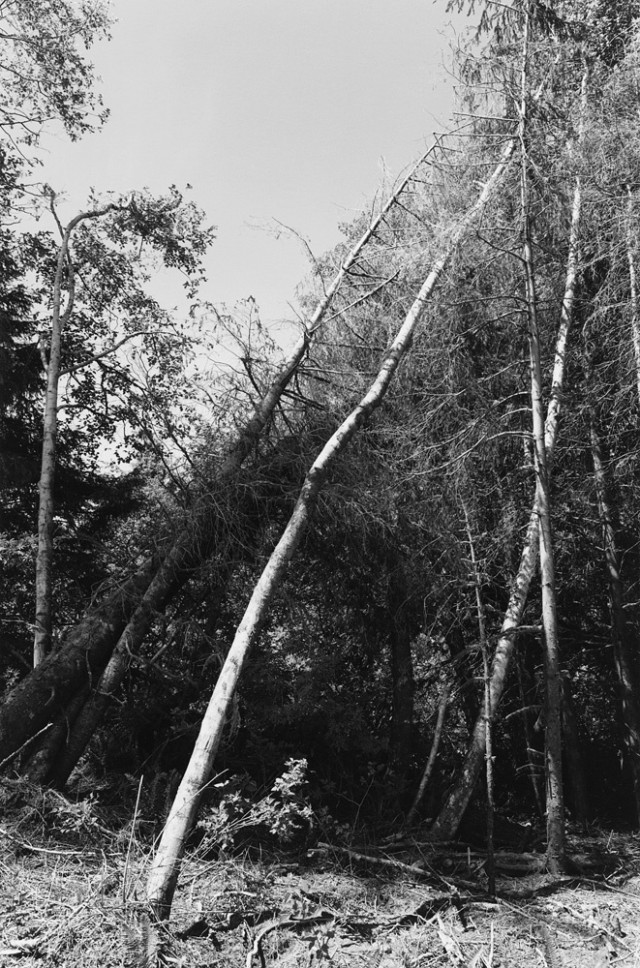
Edge of a Clearcut, Clatsop County, Oregon, 2000
“To us, there is so little work that is being made that is of consequence for the future,” says Joshua Chuang, Yale’s curator in charge of the retrospective. “We feel there is a metaphor and a lesson in Adams’s work that we wanted to broadcast to the greater world.”
Like his previous shows in Oregon—one at the Portland Art Museum, one at Reed College—The Question of Hope is modest in scale. But Adams considers it an urgent message to his adopted home.
“We have a decision to make,” says the photographer, who believes clear-cutting should be banned and has campaigned for two failed ballot initiatives to stop the practice. “It’s just like when we said, ‘No, you can’t kill the last 80 buffalo on the North American continent. The problem isn’t that we don’t know how to fix this problem; it’s that we don’t have the political will.”
“We”—Adams always uses the first-person plural to include his wife (and editor) of over 50 years, Kerstin—“have never had an opportunity to really speak about this to an audience here.”
Set in the museum’s lower-level gallery, the message will be expressed quietly. Many viewers may shrug that the pictures are, as has often been said of Adams’s work, “cold” and “dull.” But other opinions have long prevailed. In 1994, the MacArthur Foundation recognized Adams with a $340,000 “genius” fellowship. For the retrospective exhibit now traveling the world, Yale channeled resources at a level rare for a living photographer, producing a three-volume catalog, reprinting three of Adams’s seminal monographs, and producing three books of new work. The university now permanently houses more than 2,000 of Adams’s master prints.
On a sunny afternoon at his kitchen table, over tea and sweet crackers from a nearby tienda, Adams sums up the Yale experience: “There’s something very sobering about contemplating your mortality through the shape of what you’ve done. Of course, all of it is not the way you wish it were.”
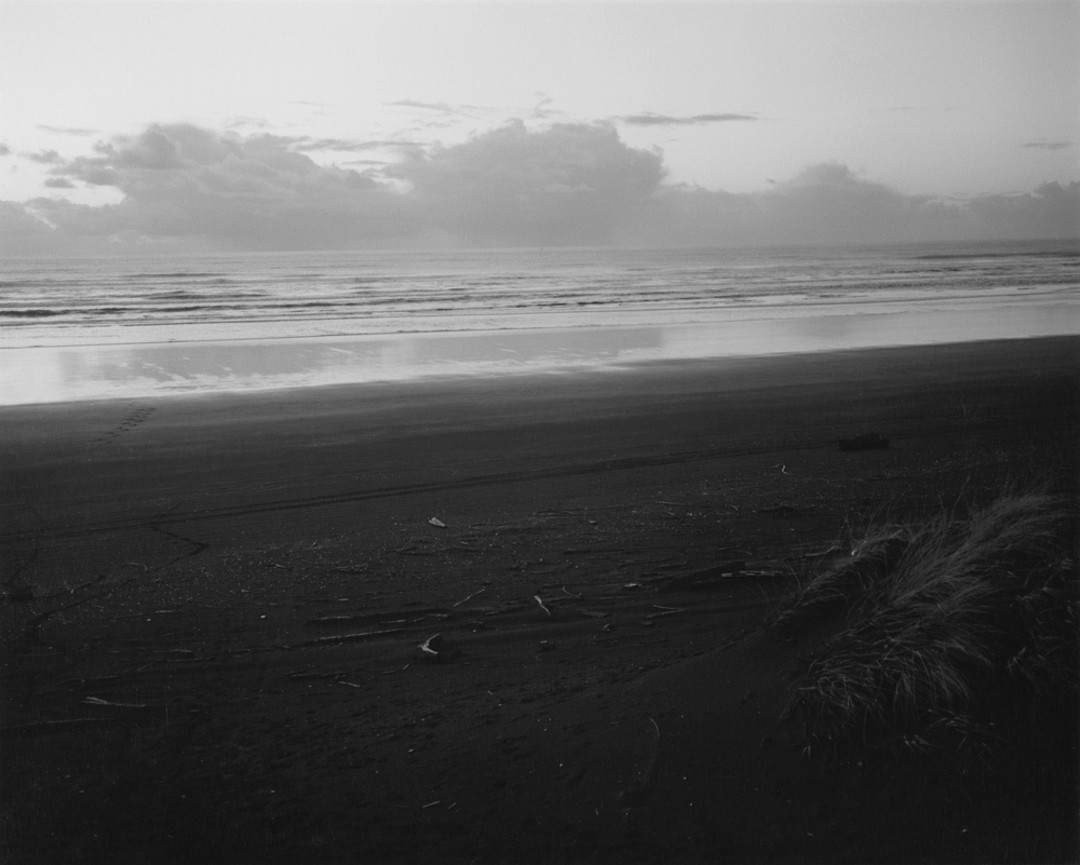
Clatsop Beach, Oregon ca. 1991
At their astoria home, the Adamses display their political beliefs like a house number. Their glass storm door is covered in stickers: “Ban Fracking,” “Support the Sea Shepherd,” “Thank you for not driving on the beach.” (The latter they had printed themselves.) On the otherwise pristinely white 1940s bungalow high on a hill overlooking the Columbia River, the effect is like pulling up behind a Berkeley VW bus. But inside, a casual orderliness testifies to Kerstin’s Swedish upbringing by parents who sold art, books, and Scandinavian furniture. Photographs by masters like Eugène Atget, Dorothea Lange, and Edward Weston and paintings by friends populate the walls, punctuated by the near-abstract sailing boat reliefs that Adams meticulously carves out of driftwood. (“Just messing around,” he says.) Leaning in various corners are driftwood sticks brushed in calligraphy by Kerstin, a retired librarian—quotes from Shakespeare, Henry David Thoreau, Theodore Roethke, and William Stafford. The couple is inseparable—“we like the same stuff,” says Adams. But in the half dozen visits I’ve paid them over 18 years, whenever it’s been for a formal interview Kerstin, after a warm welcome, excuses herself “to make some calls.”
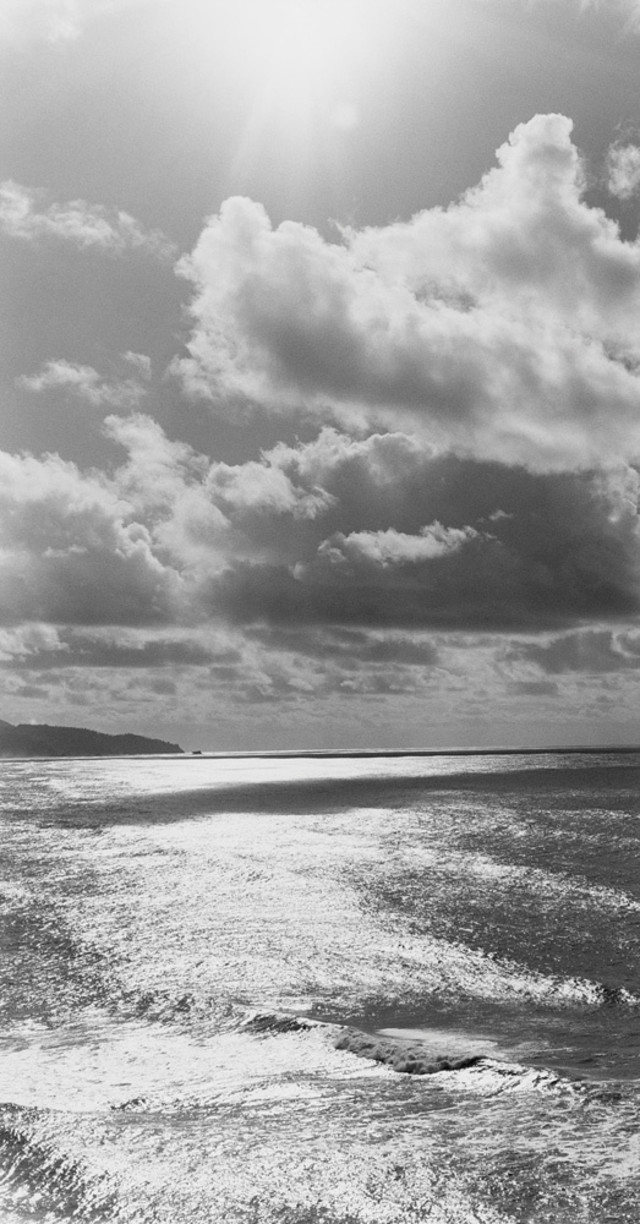
South from Ecola, Clatsop County, Oregon 1990
The Adamses’ relationship with Astoria began accidently. On their way to a summer retreat in Vancouver, British Columbia, undertaken so Adams could learn German and French for his PhD in literature at the University of Southern California, they stopped in town, ate a salmon lunch, and, as he recalls it, “said to ourselves, ‘What could be better than here?’” They eventually settled in Colorado but visited Astoria for the next 30 years. Adams’s sister moved to town and worked as a librarian. He and Kerstin moved into a house across the street from her in 1997. His parents retired to the jaunty Illahee Apartments just down the hill. (They and his sister have since passed away.)
But seen within the arc of his career, Adams’s path to the US’s first permanent settlement on the Pacific Coast gains a metaphorical quality. His family roots reach back to Maine four centuries ago, and imbue him with a sense of his own history that, he has said, “led me to take a serious look at this country.” He grew up in New Jersey and Wisconsin, but the photographic work he became best known for begins near the Continental Divide along Colorado’s Front Range. Adams first took up photography as a hobby while he was teaching at Colorado College, mostly shooting abstract landscapes and rural scenes in the vein of Ansel Adams and Walker Evans. But as the landscape around him began to change, he turned the lens to make stark, unflinching pictures of a new West.
In 1970, Adams traveled to New York and dropped off a portfolio at the Museum of Modern Art. He and Kerstin stayed at the YMCA. John Szarkowski, MoMA’s influential photography curator, took a quick interest, buying several prints. The following year, Szarkowski gave Adams an exhibition with Emmet Gowin in the museum’s hallowed halls. He turned to photography full-time soon after.
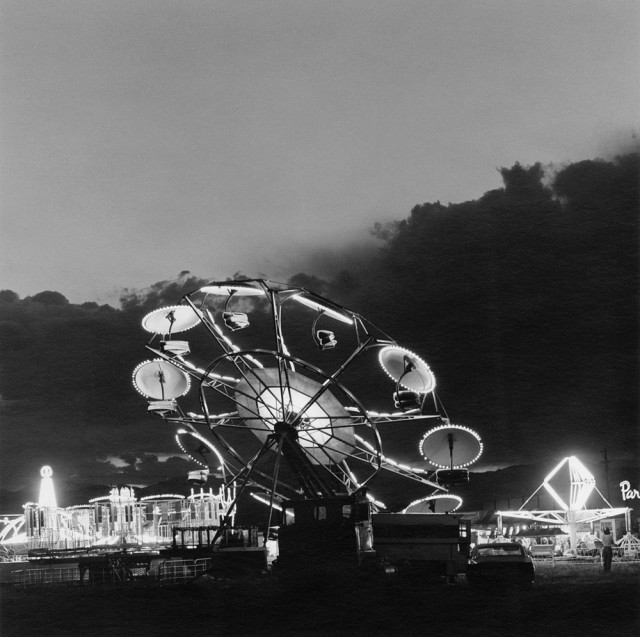
Longmont, Colorado, 1979
At the time, photography was dominated by two camps: the followers of Ansel Adams, Minor White, and Edward Weston, who shot an untrammeled, often abstract West; and documentarians who focused on anxieties of society. Adams and a small cluster of younger photographers—among them Lewis Baltz, Frank Gohlke, and Bernd and Hilla Becher—wed the two. And courtesy of New Topographics, a fortuitously timed (and well-named) 1975 exhibition at the Eastman House in Rochester, New York, the insurgents found themselves at the center of a growing market.
All those photographers have distinct styles and outlooks, and all have staked out places small and large in photographic history—but none more emphatically than Adams. “You can see traces of him in almost every contemporary landscape photographer,” says Julia Dolan, the Portland Art Museum’s photography curator. “Whether they are photographing the ruins of tract houses that have been foreclosed upon, or urban sprawl, or any landscape that has changed—Robert Adams is there.”
At first pass, Adams’s pictures can seem haphazardly composed, almost pedestrian. Rarely larger than 11 by 14 inches, they reveal their methodical intentions slowly, most often in the searing, upper-register whites of his images. The noted photographer and critic Tod Papageorge compares Adams’s printing “to a composer writing for the piano at its highest octaves.” “Combustible,” “nuclear intensity,” and “merciless” are phrases often used by admirers and critics alike.
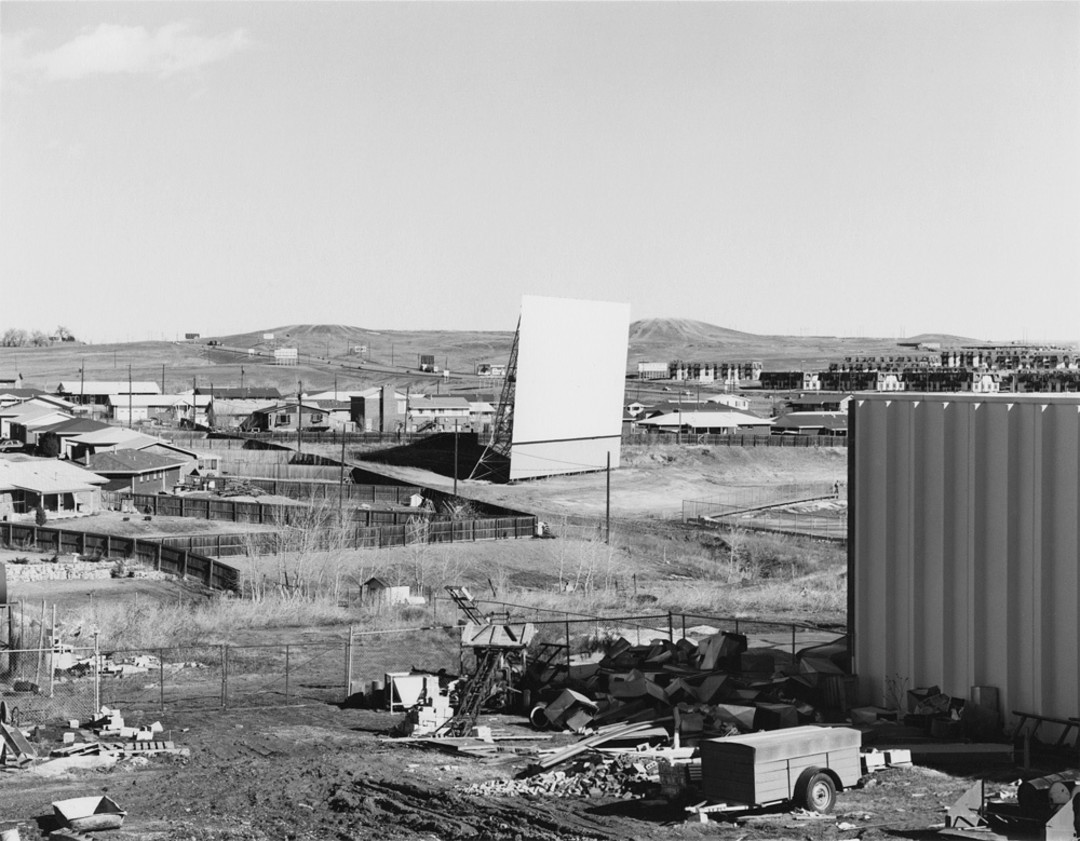
A Drive-In Movie Theater. North Denver, Colorado, 1969
In his early work, Adams’s light sharpened the jarring geometries of suburbia and exurbia, rendering more powerful his subtle revelations that humans actually lived in these environments: the silhouette of a woman’s head seen in a window, the congregation huddled outside a freshly constructed church. But as his career has progressed, Adams steadily widened and deepened his view. In the images of old roads, graffiti-scrawled rocks, and meandering creeks of his 1980 book, From the Missouri West, Adams’s light captures the earliest fingerprints of change—of humans claiming the landscape, and of nature reclaiming it back. For the 1984 book Our Lives and Our Children, Adams clandestinely photographed crying babies, soccer moms, and fawning grandparents he found in suburban Denver supermarkets and parking lots, just a few miles away from the Rocky Flats Nuclear Weapons Plant—the proximity lending his powerful light a more ominous tone. In his 1985 Summer Nights, Adams turned the rich shadows near his neighborhood in Longmont, Colorado, into an enchanting, sensual nocturne. And not since the 19thcentury’s Carleton Watkins and Eugène Atget has a photographer created so many subtly composed portraits of individual trees.
A gifted writer who crafts prose with the same austerity and clarity as his photographs, Adams framed his convictions in a 1981 book, Beauty in Photography: Essays in Defense of Traditional Values. The goal of art should be “Beauty,” he wrote unabashedly. “The darkness that art combats is the ultimate one, the conclusion that life is without worth and finally better off ended.”
Shortly before moving to Astoria permanently, Adams published a book, West from the Columbia, in anticipation of the 200th anniversary of Lewis and Clark’s journey across the American frontier. At the time, he saw it as a completion of his westward photographic journey. With so much of the continent’s interior fouled, the only open vista left to us is “with our toes dipped in the Pacific,” he told me at the time. The spellbinding pictures—his first seascapes—shot at the intersection of the river and the ocean, he said, were “made in disappointment.”
“The two places I’ve loved the most are eastern Colorado and the northwest Oregon coast. But both are in the process, if we’re honest, of being lost.”
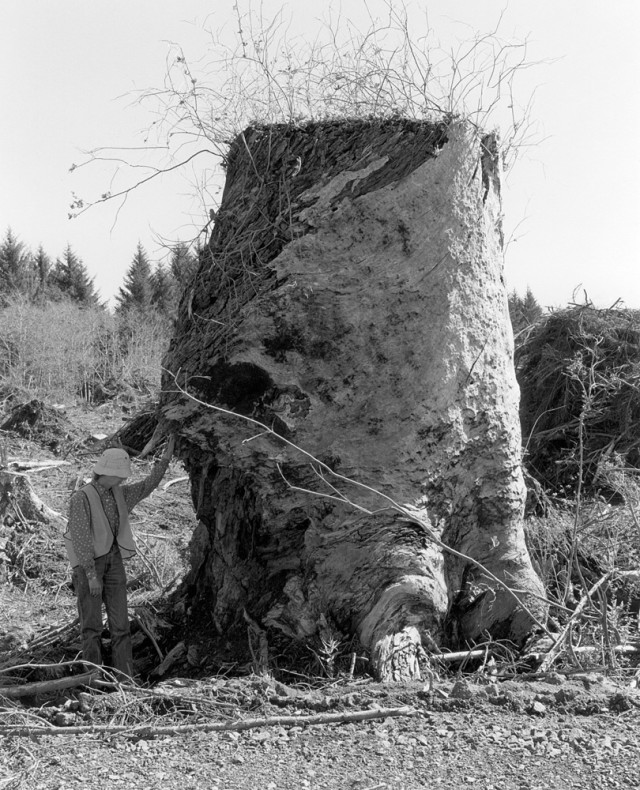
Kerstin, next to an old-growth stump, Coos County, Oregon 1999
The Adamses donate money, purchase ads, and write op-ed pieces in the Daily Astorian, waging oppositional battle on causes ranging from Patriot Act invasions of privacy to the proposed liquefied natural gas terminal in Astoria to a Chinese garden now under construction in the city’s downtown. (The couple believes the site and the money would be better suited for a new library.) “Bob is extremely diffident,” says his next-door neighbor, Tom Duncan. “He doesn’t get out there personally. He finds out who is doing something, gives money when he can, and offers encouragement and criticism. He’s a teacher much more than a politician.”
Far from being an angry local gadfly, Adams is quick to sing praises of even the smallest efforts to improve Astoria: galleries “seriously trying to stretch the market as far as it will go,” a bookstore with a decent selection of art books, an art supply store he says rivals anything in Portland, and a recent “lovely baroque concert” by five local musicians, one a city council member “with the voice of an angel.”
But, as he has also said during nearly every visit I’ve made, he and Kerstin are thinking of leaving. The latest affront is new zoning allowing for a “wall of condos” along the waterfront. “Friends ask, ‘Where will you go?’” he says. “Of course, there’s no answer,” he adds with a grin. “It’s like asking, ‘What state room would you like?’ on the Titanic.”
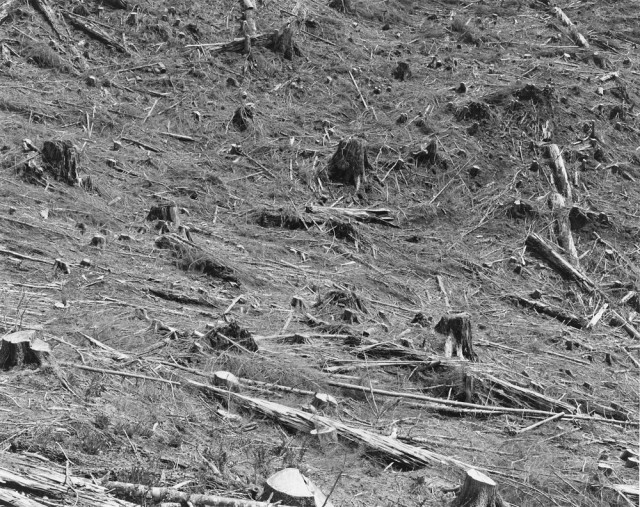
His irritations blossom from deeply rooted ideals. Yale’s Chuang, for instance, recalls his first dinner with Adams. After ordering, the then-69-year-old artist turned to the then-29-year-old curator and asked, “If I were to ask you to cite evidence that this experiment that we call America has been worthwhile, what would you say?” Caught flat-footed by such a profound question in the first minutes of getting to know someone, Chuang proposed Martin Luther King Jr. Adams smiled and added his own heroes: writers and artists like Emily Dickinson and Edward Hopper.
“I had not met another American citizen who thought about his country so much,” says Chuang. “Every time we got together, we’d talk about life and values and what you believe in. It changed my life.”
At the start of the five years spent working on the retrospective, Chuang recalls Adams contending his newly finished Turning Back would be his final book. Yet, even as they spent countless hours developing the exhibition, overseeing the reprinting of books, and building the sweeping catalog, Adams produced work for three entirely new books: Sea Stories and This Day, both images of the Oregon Coast, and Skogen, a moody exploration of the coastal forests. “That’s the kind of guy he is,” says Chuang. “He puts everything on the line. And that’s the way we worked together: we didn’t hold anything in reserve.”
So, too, with the Portland Art Museum show. “The love that he has for Oregon is so powerful but also can be very quiet,” says Dolan. “I hope people will spend time with the prints. He is someone who wants us to pay a lot of attention to this little box resting on paper.”
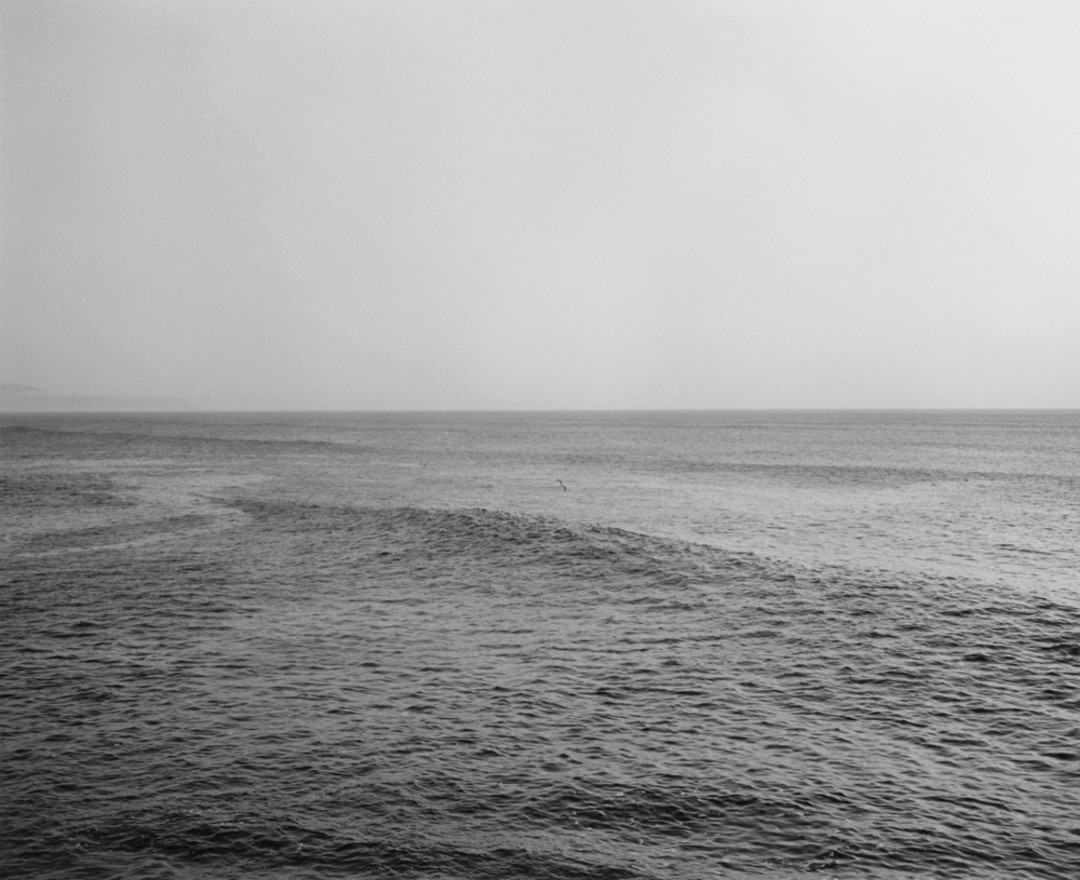
Adams works in his basement “garden variety darkroom.” He mostly shoots with 35 mm cameras these days, and says he lives “in daily fear of opening the New York Times to read that Kodak will stop making Tri-X”—his favorite film. His long-preferred printing paper, Agfa Portriga, hasn’t been made in years, meaning thousands of negatives he shot and processed for its sumptuously warm tones can no longer be printed. Of his collaboration with Kerstin, he says she is his most trusted editor for the all-important selection and sequencing of images for shows and books. “She’s very quiet,” he says. “But I’ve learned to wait. When she says something simple like ‘I don’t know,’ I’ve learned to think six times before I waste a lot of time on that picture.”
Adams compares creating his trademark tonalities in cloudy, misty Oregon to making a picture with “saw, hammer, and nails.”
“The fun of shooting someplace where composition comes easy is you’re working against your own memory of everyone else’s photographs and of your own,” he recalls of the “heaven’s light” in Colorado. “If light isn’t giving you shadows and bright brilliant surfaces, you have to get out the carpentry tools.”
But there is another difference in his The Question of Hope: the telltale promise of redemption remains absent in the clearcut pictures. “He can’t find it,” notes Portland Art Museum’s Dolan. “The clearcuts are too hateful and detrimental. So he balances them with the images of the ocean.”
Adams did not travel for the openings to any of the museums that hosted his retrospective. He says he will not attend his show’s opening in Portland, either. Though he firmly states that he “does not approve” of artists who cultivate mystique through absence, he apologetically explains he “inherited a digestive tract” from his parents that makes traveling these days challenging. With macular degeneration having already decimated his vision in one eye and a 40 percent chance that the other “could go very fast,” there is an unmistakable sense that Adams feels his time as a photographer is running out.
The couple is now at work on a photo essay, “An Old Forest Road,” shot at nearby Fort Columbia State Park in Washington, exploring a stand of trees grown back after being cut a century ago. Adams laments he’s shot only one day in recent months. Almost every day he has been on the phone with galleries that sell his work. “It’s not because we need the money,” he says. “It’s because if there’s money there, we know how we’d like to see it spent.”
Adams has no illusions about nudging the state’s forest practices. “Whoever yells ‘jobs’ loudest wins,” he says. “But Lewis Hine once said that he wanted to show what was right, so we would take care of it and defend it, and what’s wrong, so that we would want to change it. I want to say both things in this show. We give what we’ve got.”
